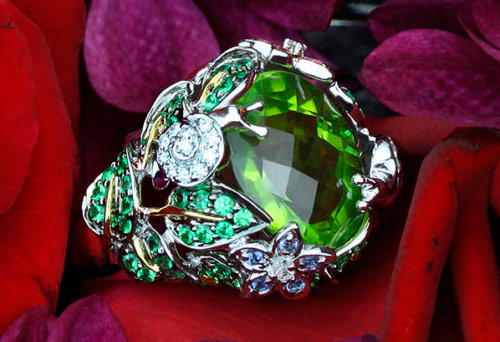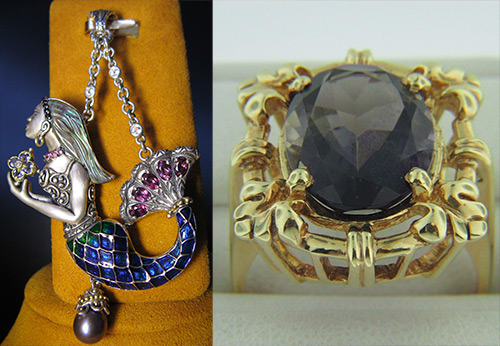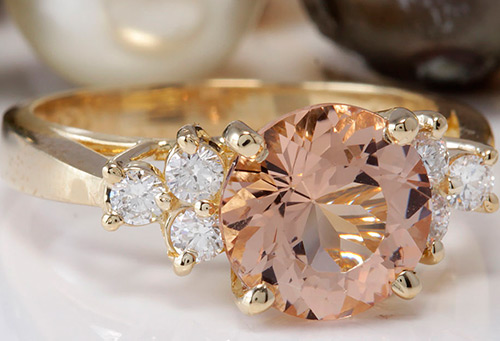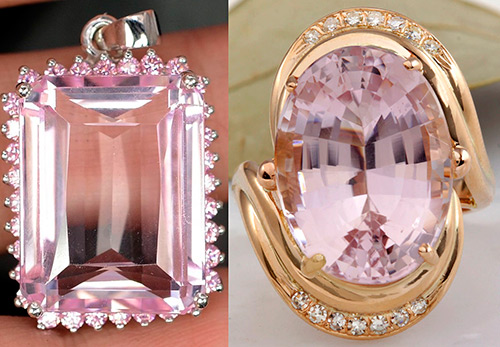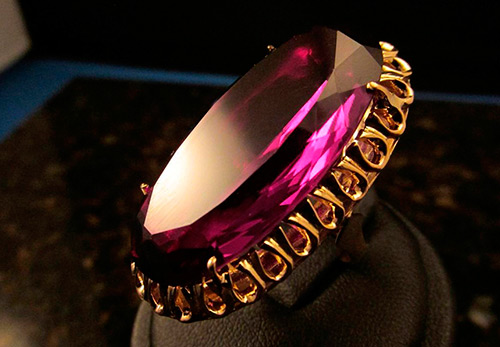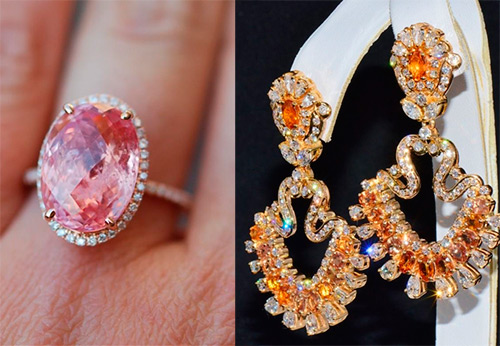Jewelry
Tanzanite stone - history of the find and properties of tanzanite
Tanzanite is a stone whose name will lead you to Tanzania. Tanzanite is a transparent stone discovered in 1967 on the Marelani Plateau in Tanzania. And this is still the only deposit, and therefore its reserves are running out. It is so similar to a sapphire that it was originally mistaken for a sapphire.
During the research, it was found that this is a kind of zoisite - Ca2Al3 [O / OH / SiO4 / Si2O7]. Zoisite, in turn, was discovered in 1805 and named after the patron S. Zois, who financed many geological expeditions. Zoisite did not particularly attract the attention of jewelers until they found a uniquely beautiful variety of zoisite, later called tanzanite.
There are different versions of the tanzanite find, but all of them bear the name of the same person. His name was Manuel de Sousa, or simply "Mad Manuel", who spent his entire life in Africa in search of something unknown. For a long time, his geological expeditions did not lead to anything, and in order to somehow exist and feed his family, he moonlighted as a tailor.
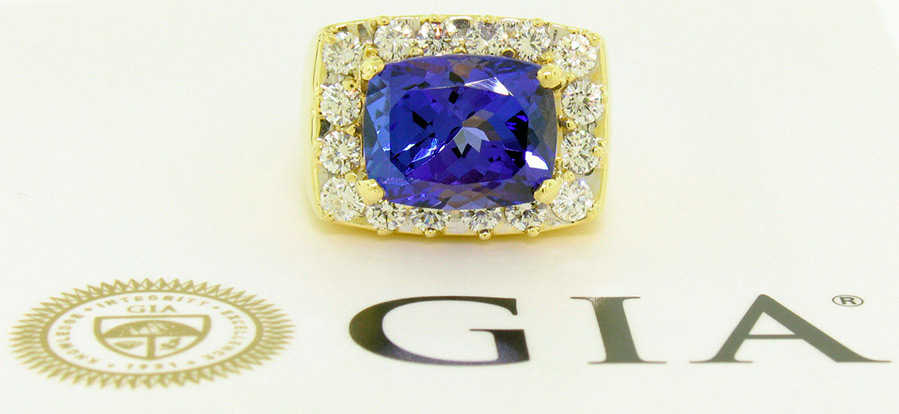
Once, when once again Manuel went to the foot of Kilimanjaro, because of the bad road, the driver refused to go further and simply threw away his "crazy" passenger. And he threw it away not far from the first find of tanzanite. When the future tanzanite was in the hands of Manuel, at the first moment he thought - sapphire! But then, looking at the crystal, I realized that the hardness is not sapphire at all.
It was necessary to conduct research to find out what kind of crystal it really is. There is no money for research. Manuel began making money by working day and night at his tailor's desk. Studies have shown that the crystal is a type of zoisite, but before this find there were only green ones, and there was not yet blue.
The future tanzanite, in the meantime, zoisite, fell into the hands of jewelers of the world famous Tiffany company. Here it was quickly appreciated, and in the 70s unique collections with this stone appeared. But nevertheless, a beautiful crystal was called zoisite, and sometimes just a sapphire imitator. But, you must admit, for such a unique crystal to be an imitator, even if sapphire, nevertheless, it is too modest, and zoisite for the new crystal in the Tiffany company was considered an inappropriate name, something similar to “suicide”.
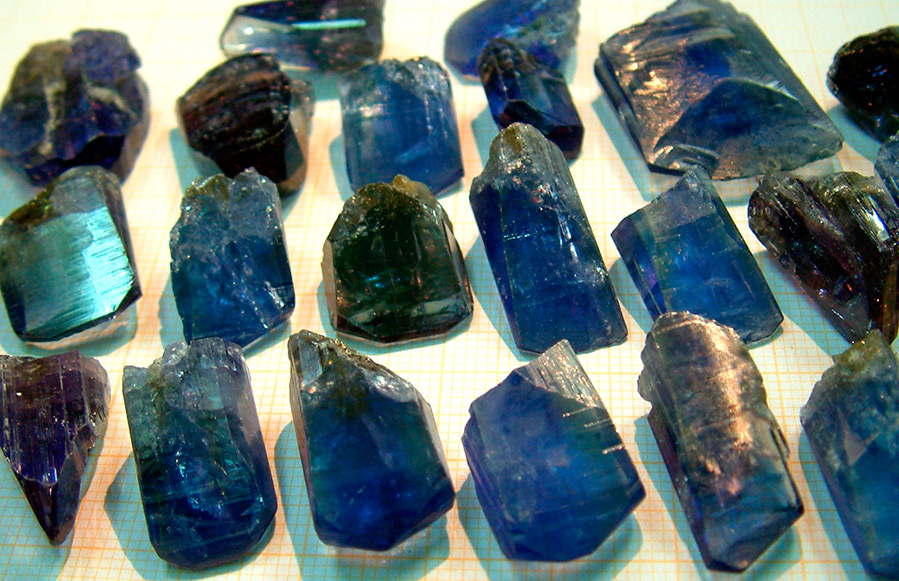
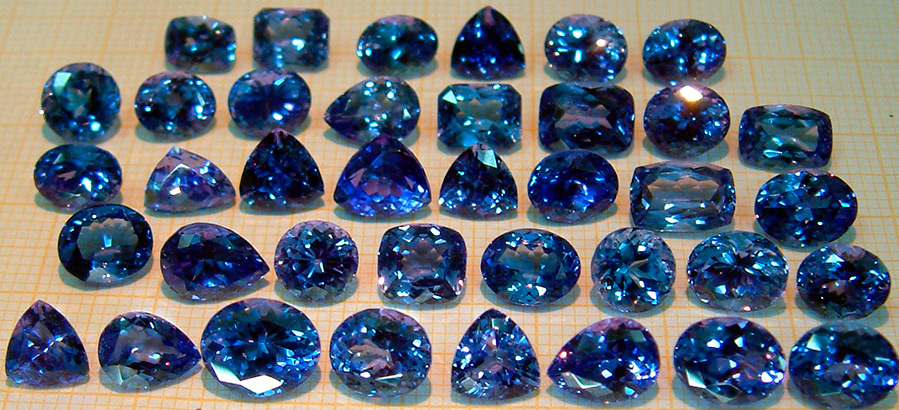
This is how a new stone appeared - tanzanite, which began to be called the "gem of the 20th century". At that time, the first wave of fashion for African ethno began, and wise suppliers carried out their policy so cleverly that tanzanite surpassed even sapphire in price and demand, and not only sapphire, but many other stones, including some diamonds.
No matter how wise the market policy for the sale of precious crystals, but apart from it, the growing price of tanzanite and the demand for it is explained by the rarity of the stone, the constant decrease in the reserves of this beauty of nature, but, in the end, its unique deep saturated blue.
This beautiful stone is little known in Russia, because when it appeared on the jewelry market, the demand for precious stones in Russia under the conditions of "developed socialism" was extremely limited within the framework of the domestic jewelry industry. Therefore, many buyers still cannot understand what kind of stone it is, why it is expensive, and when they find out that this is not a sapphire, they simply move away from this noble crystal.
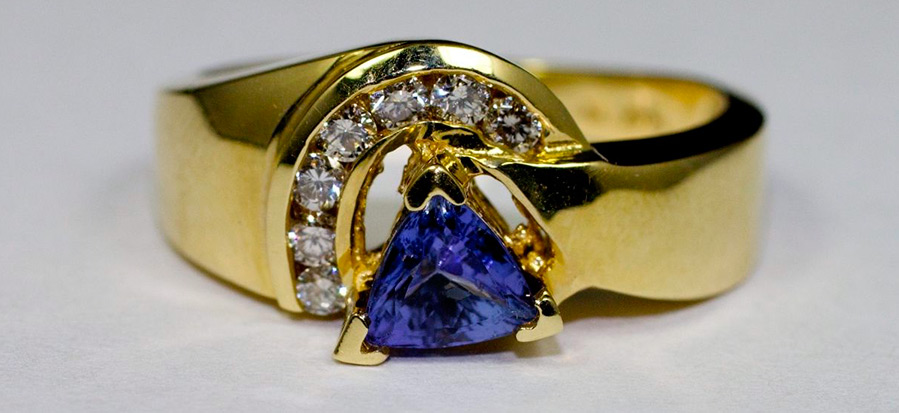
Tanzanite is a crystal of unique beauty with a bright deep bluish-blue color... There is a blue-lavender color, but in general, the color of tanzanite ranges from blue to purple, and if you look at it from different angles, then you can see sparkling blue, purple, green and even brownish-yellow colors.
Tanzanite, like alexandrite, changes color when lighting changes... Under electric lighting, tanzanite is amethyst-violet, under daylight it is blue-blue.
There is also tanzanite cat's eye; cabochons are usually made from such crystals. The blue color of tanzanite is a rarity, it is found only in the place where "Mad Manuel" once found it. But with the help of heat treatment up to 400 degrees, all tanzanites can be blueed. This effect is quite stable, however, for the sake of caution, careful treatment of the crystal is required, that is, sudden changes in temperature should be avoided.
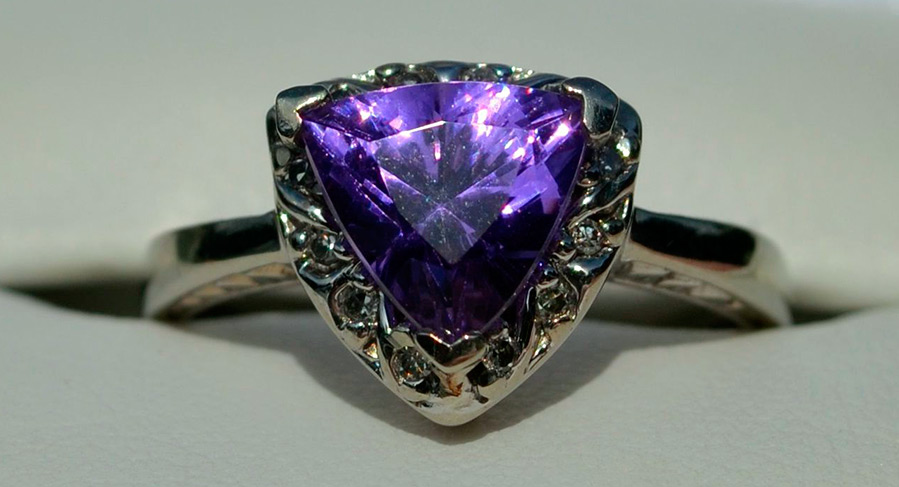
Tanzanite has a hardness of 6.5 - 7.0, a density of 3.1 - 3.5 g / cm3. It contains chromium and vanadium as impurities, which give the stone a unique range of colors from sapphire blue to amethyst violet.
Tanzanite is unusually fragile and requires the greatest care in cutting and setting, one miscalculated effort and the crystal will crumble into shards. In the processing of tanzanite, brilliant or mixed cuts are used, crystals with inclusions are processed in the form of a cabochon.
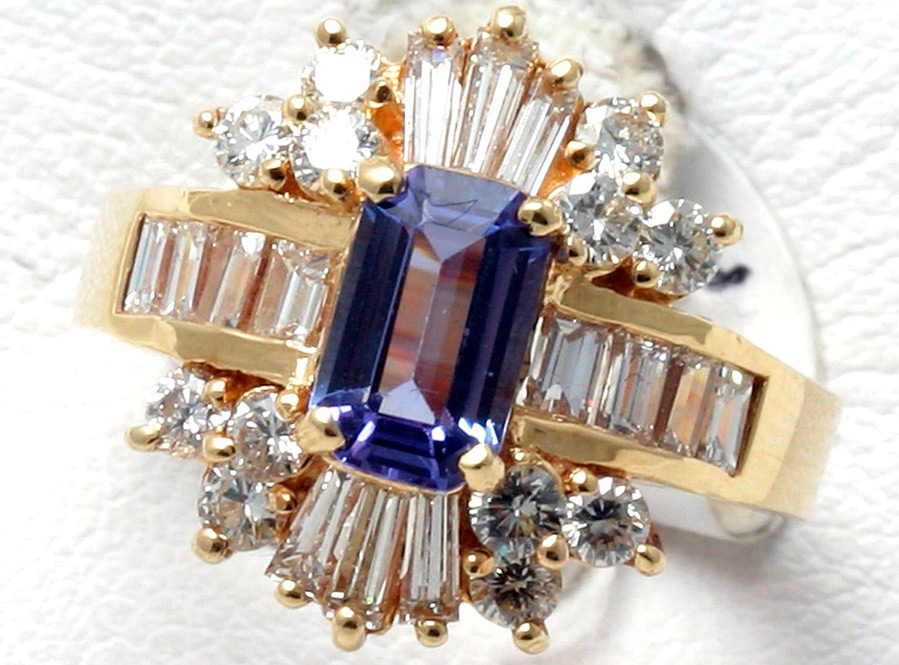
Tanzanite - stone price
The price of tanzanite fluctuates, because demand is growing, and reserves are concealing, there are no new deposits yet. All these circumstances make tanzanite a rare and desirable gem, sometimes not inferior in value even to a diamond.
A five-carat stone can cost from $ 600 per carat to 1,000 or more. It all depends on the mass of the crystal and the color. The deep blue color is appreciated above all. The most expensive are royal tanzanites, which in daylight have a deep blue color with a purple tint, and under artificial lighting they cast a red-purple color.
There is no artificial tanzanite yet, and a blue-violet synthetic sapphire can be considered the main counterfeit of the stone. It is possible to distinguish a natural from a synthetic crystal if the stone changes color when moved in the hand at different angles of view - it means that it is tanzanite, the synthetic sapphire remains just blue.
Most often, the stone is found in the form of small crystals, but once a giant tanzanite weighing about 3 kg or 16839 carats was discovered at the foot of Mount Kilimanjaro.
Tanzanite requires caution in jewelry - it is very fragile. The stone must not be cleaned in ultrasonic baths or in an acidic environment. The best cleaning for tanzanite is a soapy environment. Tanzanite is quite vulnerable and in a wear, as already mentioned, an acidic environment is not for him, so it is better to wear jewelry not as everyday, but as a holiday.
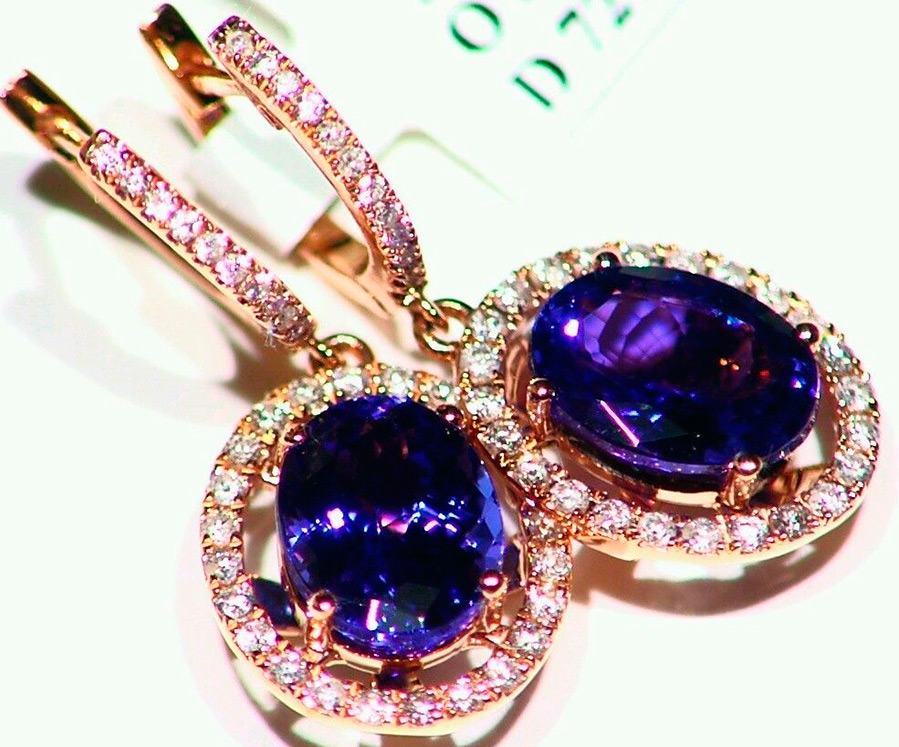
Tanzanite - healing and magical properties of the stone
As always, researchers are trying to find the magical properties of the stone, so tanzanite was endowed with the properties of attracting love and wealth, as well as happiness in personal life. Lithotherapy endows tanzanite with healing properties. The blue color of the stone soothes the eyes. The blue crystal is also believed to help with colds and fevers. Some lithotherapists use tanzanite to treat various ailments of the spine.
If your casket does not have such a stone, and you strive for family happiness and well-being, you should definitely wear tanzanite jewelry, for example, a brooch, pendant or earrings.
The bright blue sky, the purple of the southern nights, the bright green of the palm leaves, the brown-yellow earth in the rays of the scorching golden sun - all of Africa was reflected in the iridescence of the radiance of this precious stone. By the way, tanzanite has already acted in films, he got the role of a blue diamond in the movie "Titanic" due to the fact that it turned out to be more brilliant and bright than a blue diamond.
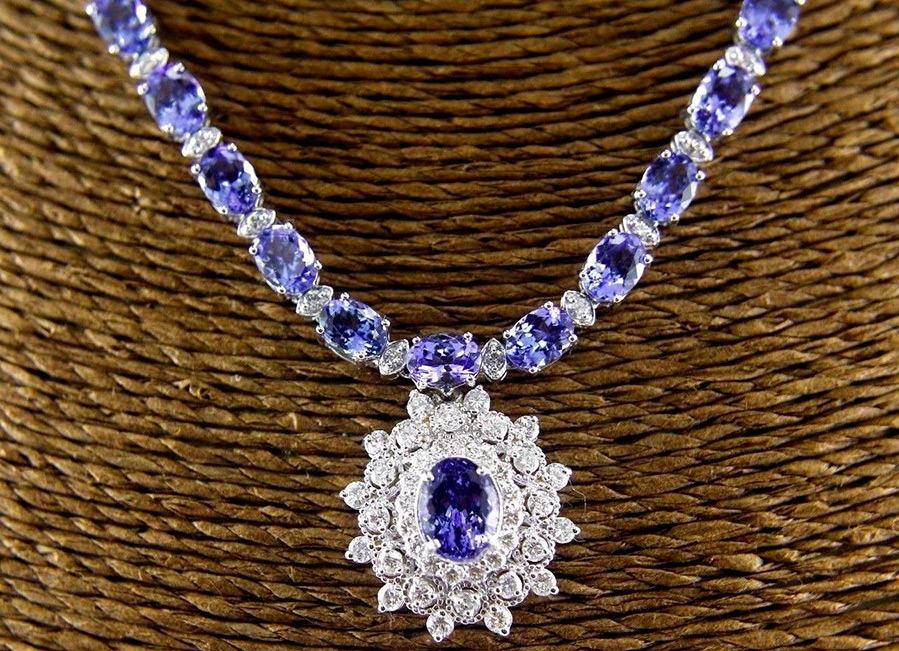
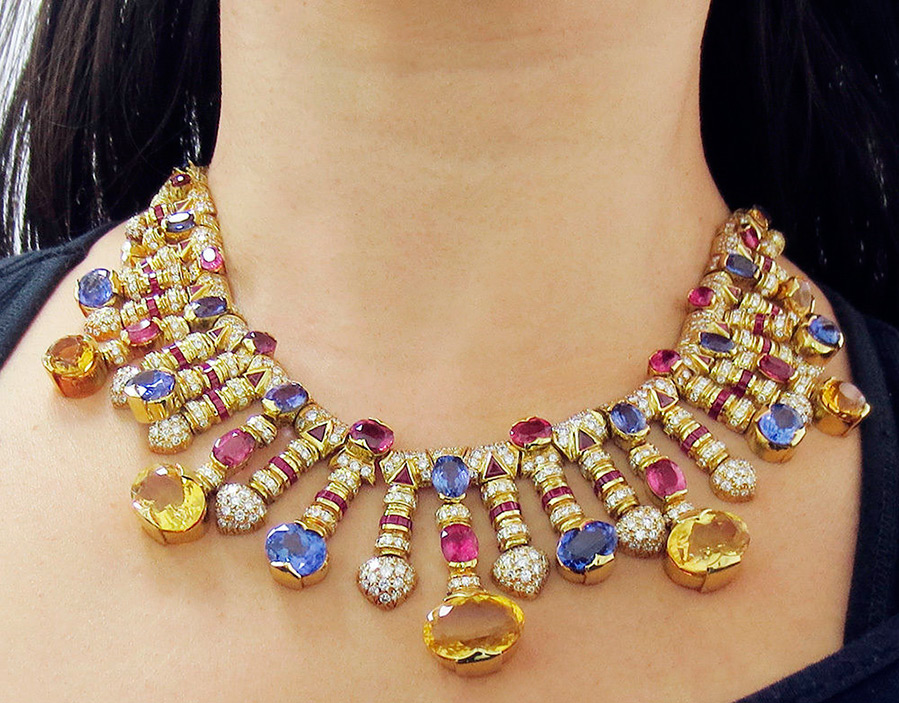
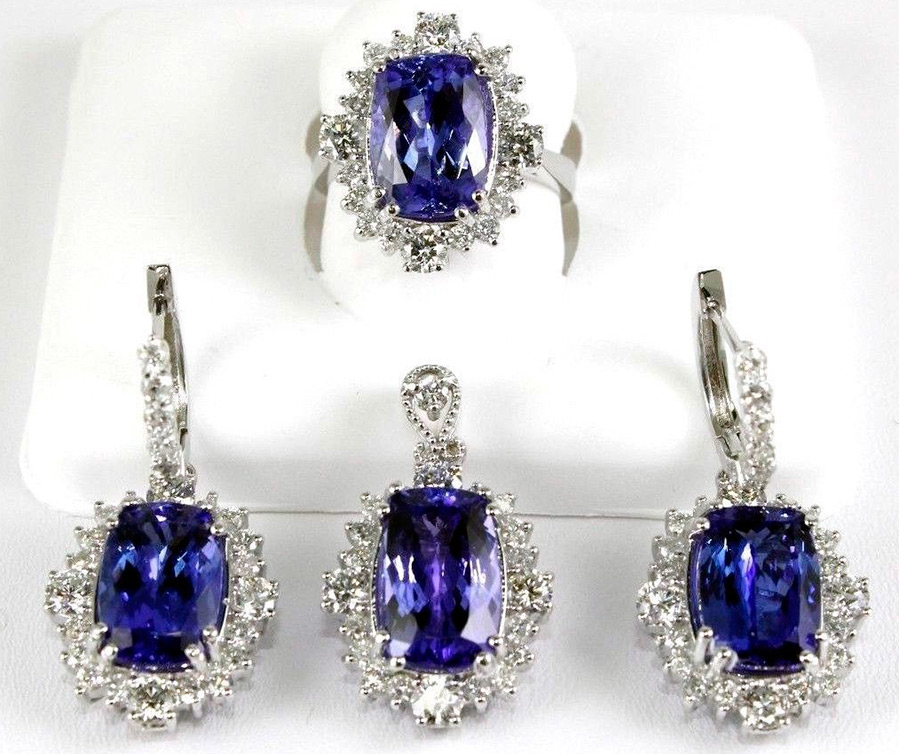
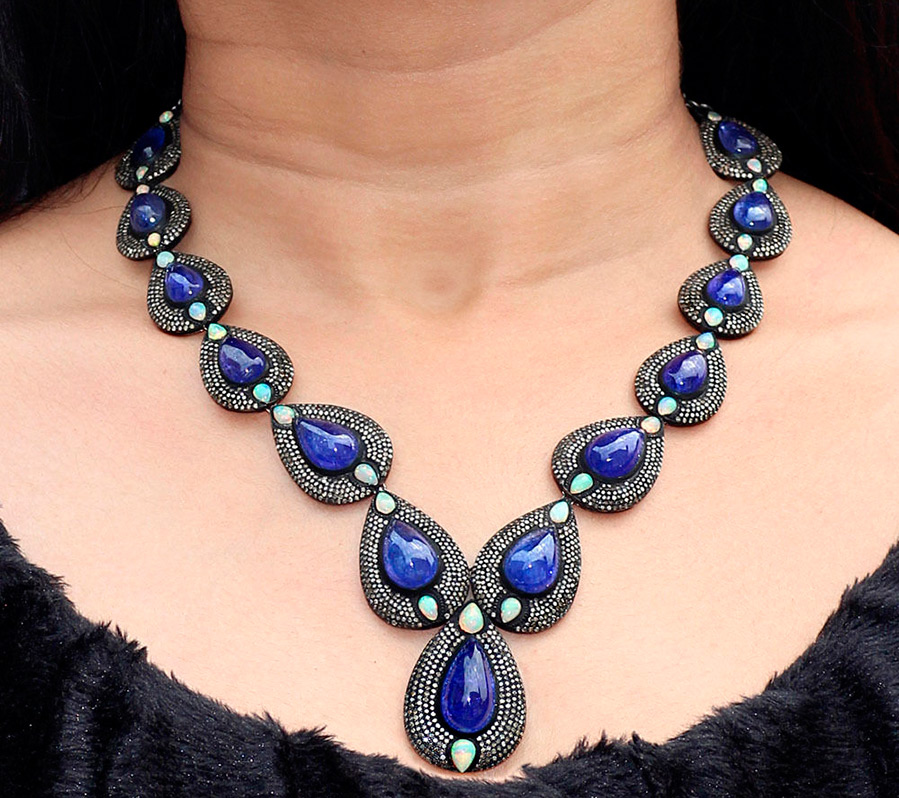
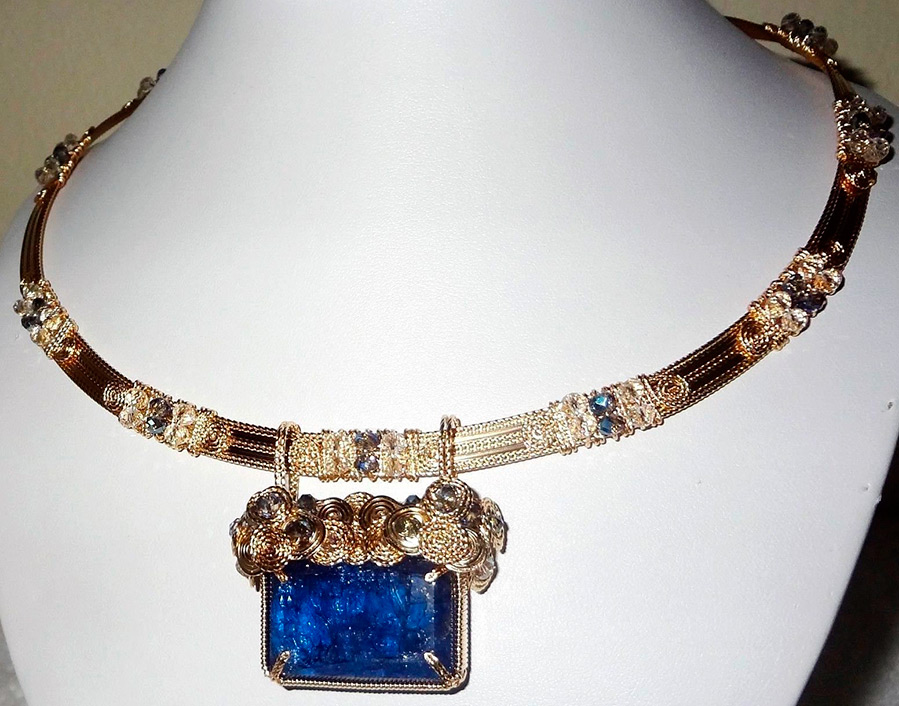
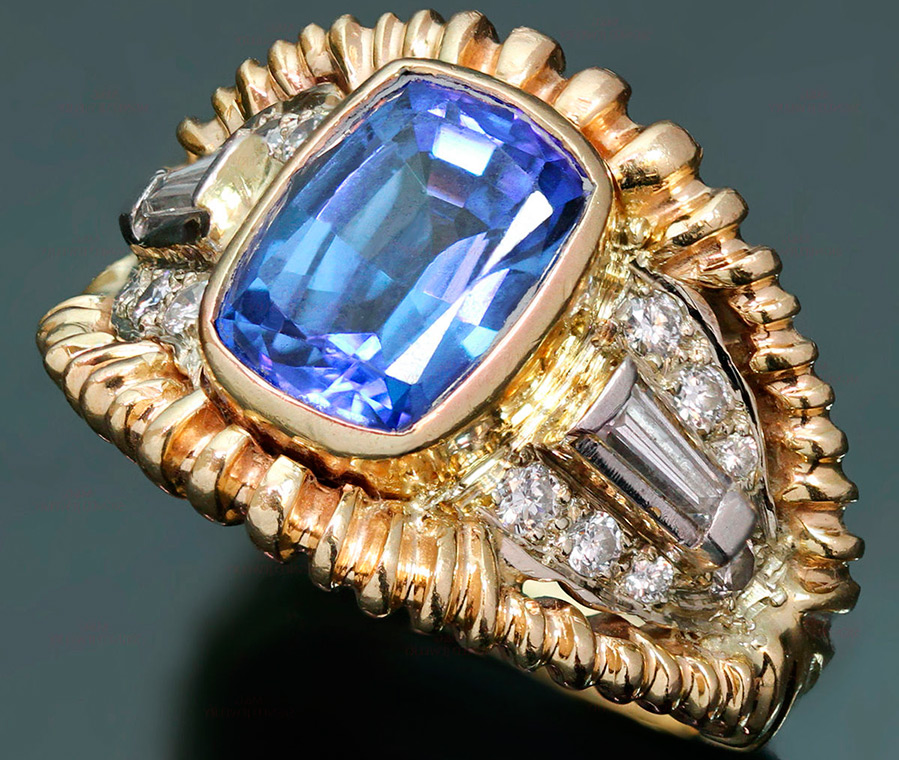
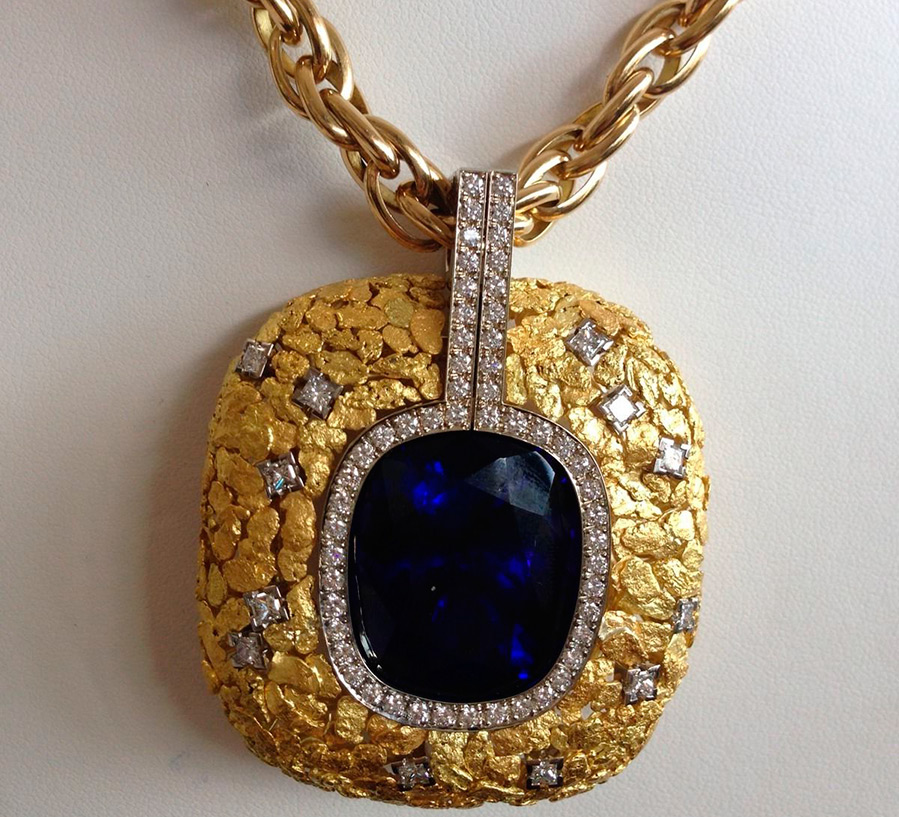
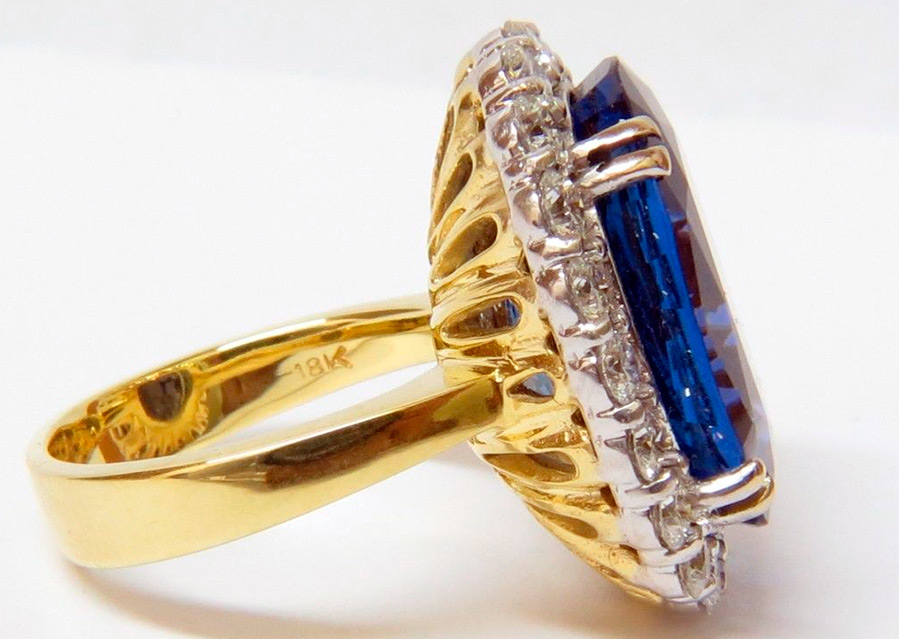
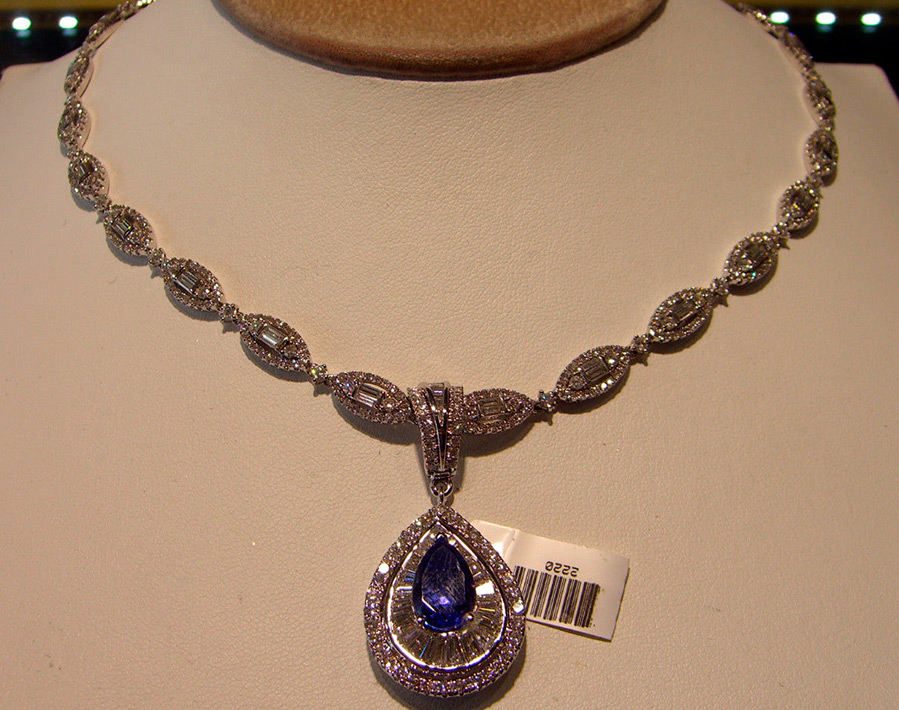
Comments and Reviews
Add a comment
Rating news
Shades of clothing that make women look younger
What shades of hair make women younger: rules and photos
Funny wedding dresses - photos and ideas
12 most expensive down jackets for the winter
How to look 25 at 40: tips from supermodels
Beautiful schoolgirls
Anti-aging haircuts and hairstyles for women
Fashionable skirts for autumn and winter
Fashionable women's trousers for the cold season
Fashionable and stylish sandals for summer 2024
Spring-summer 2024
 Fashionable dresses and tops with thin spaghetti straps
Fashionable dresses and tops with thin spaghetti straps
 Bandana tops: how to wear stylishly and beautifully
Bandana tops: how to wear stylishly and beautifully
 How to put together the perfect men's wardrobe for the summer
How to put together the perfect men's wardrobe for the summer
 Trendy shorts for spring-summer 2024
Trendy shorts for spring-summer 2024
 Fashionable skirts for spring-summer 2024: a guide to online shopping
Fashionable skirts for spring-summer 2024: a guide to online shopping
 The most fashionable dresses spring-summer 2024: styles and colors
The most fashionable dresses spring-summer 2024: styles and colors
 Fashionable total look 2024: image ideas and trends
Fashionable total look 2024: image ideas and trends
